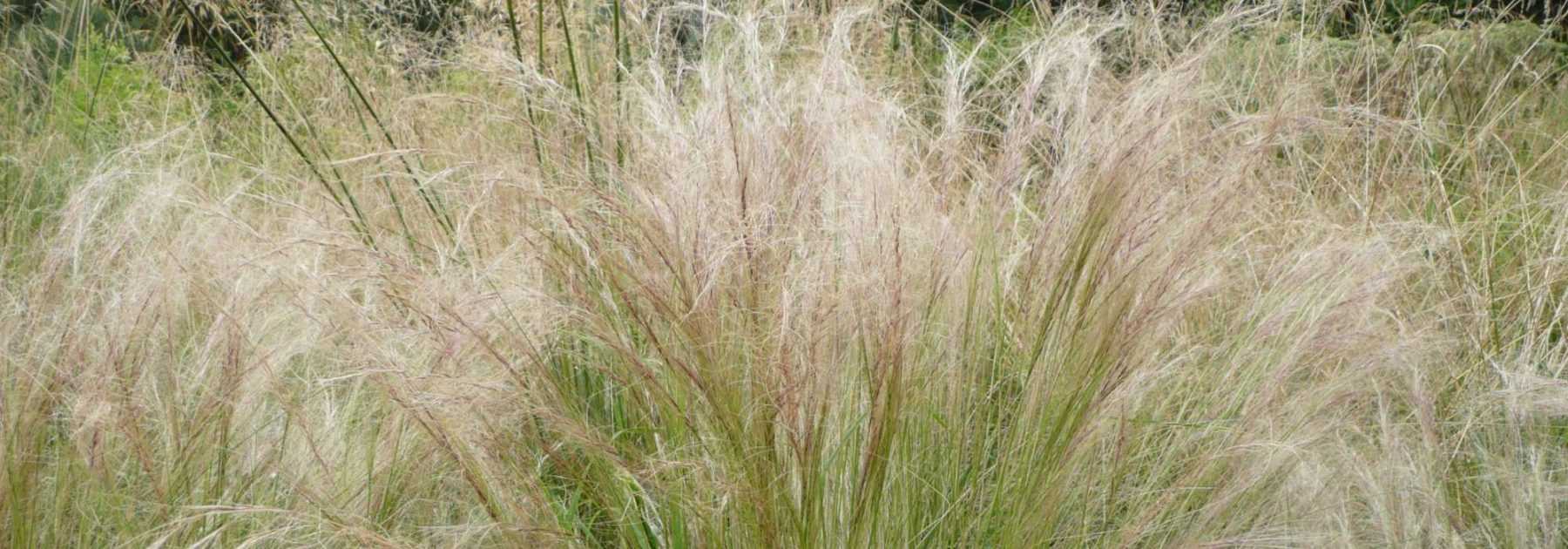
Stipa, Angel Hair: Planting, Pruning, Care
Contents
Stipa in a few words
- Undoubtedly the most popular of all ornamental grasses
- With its silky spikes dancing in the wind and light, its flowering is among the most beautiful
- It fears neither wind nor heat and thrives in dry or well-drained soil
- Easy to grow, it quickly adorns sunny, dry, windy and arid areas of the garden
- Superb appearance all year round, perfect for both natural and contemporary gardens, in borders, rockeries and even containers
Our expert's word
Wild garden enthusiasts are well acquainted with Stipa, this ornamental grass with silky, airy clumps that sway with the slightest breeze.
Proudly upright yet remaining supple and light, it brings levity to all natural compositions or softens the clean lines of a minimalist garden, establishing itself in recent years as an essential – one of the most beautiful flowering grasses.
Hardy and unfazed by challenging conditions, neither too tall nor too short, Stipa is a perennial plant equally at home in both wild and contemporary gardens.
From Stipa tenuifolia (syn. Stipa tenuissima), better known as “angel hair” or “pony tails” among English speakers, to the towering Stipa gigantea and the Stipa capillata with its delicate silvery, silky spikelets – all boast magnificent foliage year-round that catches the light beautifully under dew or frost.
Stipa fears neither wind nor heat, tolerates drought, and thrives in sunny spots with dry or well-drained soil.
With its quivering silhouette and authentically wild appearance, it adds structure and volume to windy, arid garden areas – whether in naturalistic borders, dry rockeries, pathway edging, or even in containers.
Add grandeur and poetry to your garden and discover Stipa, one of the most fashionable ornamental grasses of the moment.
Description and botany
Botanical data
- Latin name Stipa
- Family Poaceae
- Common name Feather Grass, Angel Hair
- Flowering June to November
- Height 0.45 to 2 m
- Exposure Sun, partial shade
- Soil type Dry, well-drained
- Hardiness -5°C to -20°C depending on variety
The Stipa is a herbaceous perennial plant belonging to the Poaceae family, like many ornamental grasses. It also grows in light woodlands and on rocky slopes in Central America, from Argentina to Mexico, as well as in southern Europe and western Asia.
While the genus includes about 300 species, in our gardens we most commonly encounter Stipa tenuifolia (syn. Stipa tenuissima), nicknamed “Angel Hair” with its silky blonde bearded spikes, Stipa pennata with silver seed heads, Stipa gigantea, the giant feather grass or giant oat which can reach 2 metres in height, Stipa capillata with its thick, tufted base and glaucous green leaves, and Stipa arundinacea with foliage tinged rust-coloured.
With relatively rapid growth, stipa stands upright while remaining flexible, with a more or less broad and trailing habit. This rhizomatous grass grows in a dense, compact clump, 50 cm to 2 m tall depending on the species, bristly to slightly arched, sometimes splaying out into a graceful fountain shape forming a spectacular sheaf.
Evergreen in mild climates or deciduous, the long leaves (10 to 70 cm) are very fine linear, arched, usually rolled, sometimes flat, waving at the slightest breeze. Shiny and tough, they range from fresh green to dark green or blue-green. The spring green young leaves of Stipa arundinacea stand out by becoming burnt orange in summer then turning coppery rust in winter.
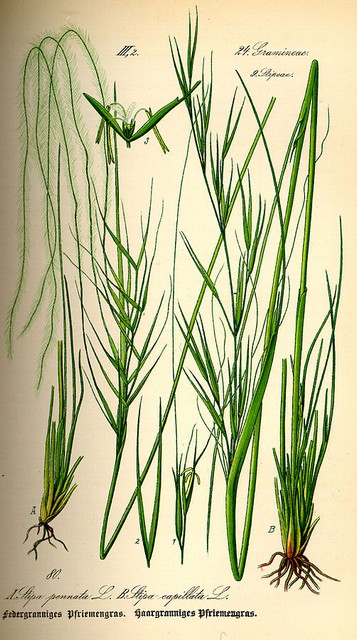
Stipa pennata and Stipa capillata – botanical illustration
From this mass of ribbon-like foliage emerge numerous slender, very sturdy culms bearing, from May-June to October at their tips, narrow, slightly curved downy panicle inflorescences. Formed of flattened spikelets bearing feathery or silky spurs 10 to 80 cm long, they sway at the slightest breath of air.
While in Stipa gigantea the flowering droops in golden panicles resembling those of oats, most stipas evoke angel hair with unparalleled poetry.
Silver, white tinged purple, parchment blonde turning golden bronze in autumn or dark pink to brown, these bearded spikelets are so fine they resemble a shimmering cloud from afar.
During summer, the plumes fruit and transform into spectacular seeds prolonged by long threads resembling silky beards or tow that float in the wind and glisten under morning dew and the slightest ray of sunshine. Scattered by the wind, they self-seed wherever they please in nature.
Very graphic, they are much appreciated for dried flower arrangements and continue the spectacle in winter when hoarfrost covers the dried culms and inflorescences.
Easy to grow, mostly hardy (-10 to -20°C), even tolerating drying winds, sea winds laden with spray, and showers without flinching, stipas can be planted in most of our regions: some more tender varieties (-5°C) are however best suited to mild climates.
Stipa needs full sun to develop properly and thrives on poor soils, content with dry, light, calcareous, rather poor, very well-drained soil: it dislikes winter wet.
Under the slanting light of late summer as under frost, Stipa always brings a strong presence, beautiful structure and incomparable lightness to the garden, from the most wild to the most contemporary or urban. It’s an essential plant for dry gardens.
It can be planted as a specimen or in large drifts in big borders and naturalistic meadows, to highlight a path or border or in a large container.


Stipas form a somewhat eclectic group: Stipa arundinacea, Stipa capillata, Stipa tenuifolia, Stipa gigantea.
Read also
Planting ornamental grassesMain species and varieties
A small number of Stipa species are available for purchase, varying in size (from 45 cm for the most well-known Stipa tenuifolia or “Angel Hair” to 2 m in height for Stipa gigantea, best suited to the back of borders) and hardiness. While most tolerate extreme cold (down to -20°C in well-drained soil) without flinching, others prove moderately hardy (-5°C).
All are sun-loving perennials that dislike excess water and clay soils. Stipas adapt very well to container cultivation and form an ornamental clump year-round!
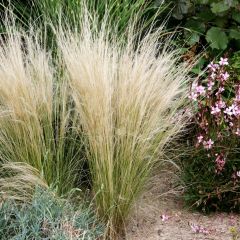
Stipa tenuifolia
- Flowering time August, September
- Height at maturity 45 cm
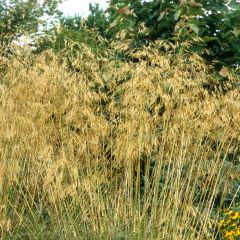
Stipa gigantea
- Flowering time June to August
- Height at maturity 2 m
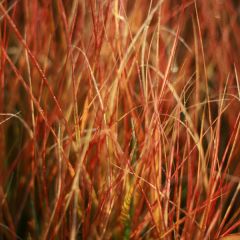
Stipa arundinacea
- Flowering time September to November
- Height at maturity 1 m
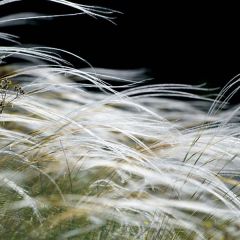
Stipa pennata
- Flowering time August to November
- Height at maturity 40 cm
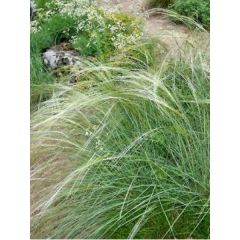
Stipa capillata
- Flowering time August, September
- Height at maturity 60 cm
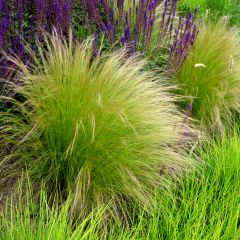
Stipa tenuissima Angel Hair
- Flowering time August, September
- Height at maturity 45 cm
Discover other Stipa
View all →Available in 1 sizes
Available in 2 sizes
Available in 3 sizes
Available in 3 sizes
Available in 2 sizes
Available in 1 sizes
Available in 1 sizes
Available in 1 sizes
Available in 1 sizes
Available in 2 sizes
Planting
Where to Plant Stipa
Most Stipa varieties show excellent cold resistance (down to -15°C to -20°C in well-drained soil) and thrive throughout France.
Stipa needs light and will grow vigorously in full sun and warmth, though it tolerates light shade. It is unfazed by drought, heat, drying winds or sea spray, making it perfect for coastal gardens exposed to sea winds.
This undemanding grass thrives in challenging conditions, flourishing in poor, stony or sandy soils. It prefers dry, light, rocky soils, even chalky ones, provided they are well-drained and low in fertility. In fresh but very free-draining soil, species like Stipa gigantea develop a more luxuriant appearance.
Its only dislike is heavy, waterlogged winter soils.
Choose an open, sunny spot: within two seasons it forms generous, airy clumps. Until established, fill gaps with annuals.
It can enhance the back of borders with height and volume, provide structure, or serve as ground cover with lower-growing varieties.
Essential in dry or gravel gardens, it suits settings from wild to contemporary. Its year-round appeal offers versatile uses: as a specimen for tall varieties, massed in naturalistic plantings, lining paths, in dry rockeries, weaving through mixed borders between taller companions, or in patio containers where you can stroke its wonderfully soft, tousled spikelets.
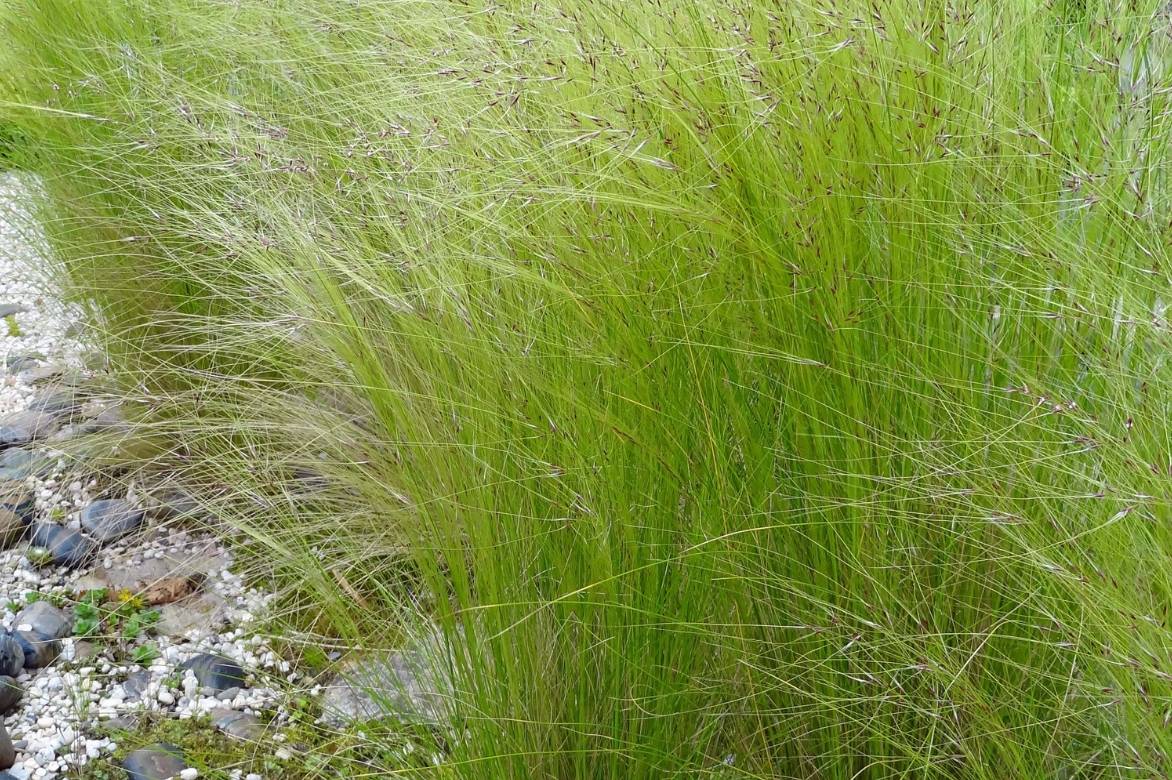
Stipa planted among stones and gravel
→ Watch our video ‘Ornamental Grasses for Summer‘
When to Plant Stipa
Plant Stipa in spring (March-May in cold, damp regions) or autumn (October-November in hot, dry climates) to establish roots before summer. Always plant after frost risk has passed.
How to Plant Stipa
In the ground
Stipa requires free-draining soil without winter waterlogging. Plant giant varieties singly for impact, or 1 per m². Space plants 40cm apart in rows. For naturalistic drifts, plant 3-7 per m².
Avoid compost or fertiliser at planting – instead add gravel, especially in heavy clay, to improve drainage. In wet soils, plant on a raised rocky mound in pure sand.
- Dig a hole 2-3 times wider than the rootball
- Loosen extracted soil, adding grit and river sand to lighten
- Add drainage layer in the base
- Position with the collar at soil level
- Firm gently
- Water weekly during the first summer
Growing Stipa in Pots
Use light compost. Group several plants.
Stipa can also be grown from seed – see our guide How to Sow Stipa.
- In a terracotta pot (min. 50cm diameter), add drainage (gravel, stones)
- Plant in loam, compost and 20% coarse river sand
- Water after planting, then regularly
- Position in full sun
→ More in our guide: Growing Stipa in Pots for Patios and Balconies.
Read also
Cutting back ornamental grassesWhen and how to sow Stipa seeds
Sowing takes place in spring, from February to May with mature seeds harvested in the garden at the end of summer or with our Stipa seeds in packets. It can prove rather tedious as a cold period is required to break their dormancy. Germination is slow.
- Sow in trays or pots using a very fine mix of compost and sand
- Cover the seeds lightly with compost
- Place your sowings at 15-18°C for 2 weeks then refrigerate for 3 to 6 weeks
- Keep the substrate moist until the young plants emerge
- When the young plants have 2 or 3 leaves, prick them out into individual 7.5cm diameter buckets
- Overwinter them frost-free and plant them out the following spring or autumn
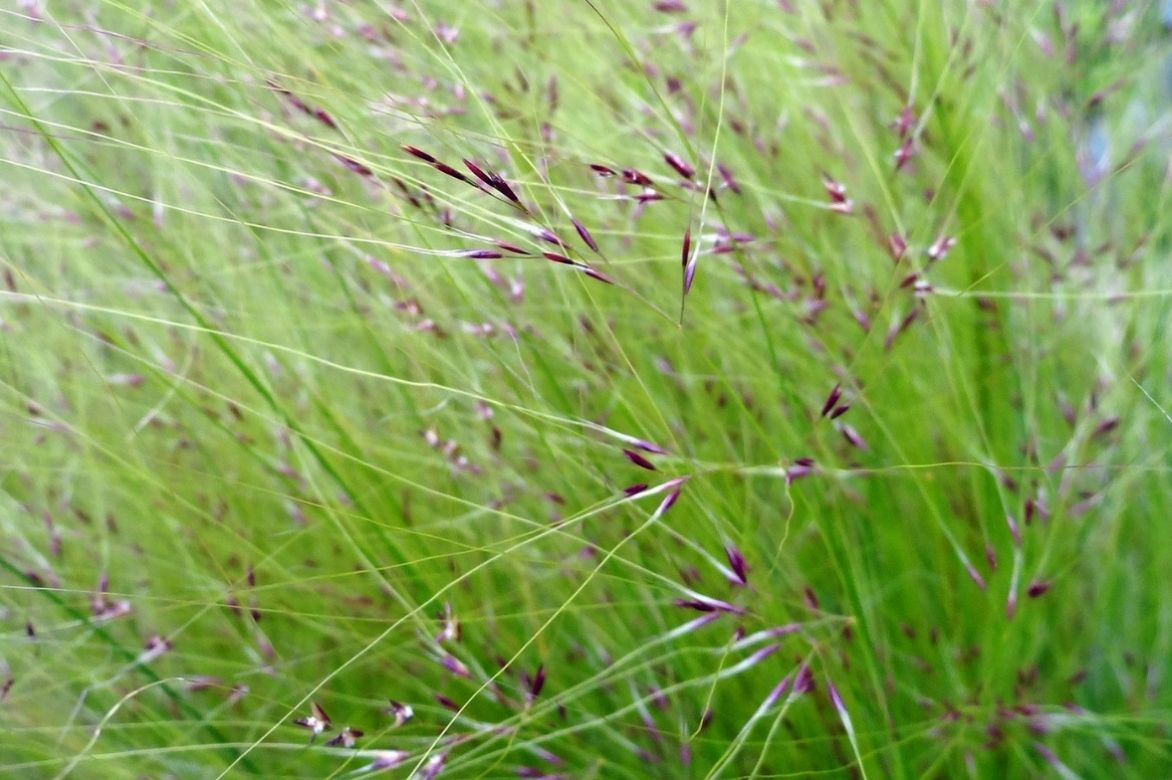
Close-up of Stipa tenuifolia inflorescences which will later produce seeds.
Maintenance and Pruning of Stipas
The Stipa is a hardy plant, ideal for sustainable gardens that are low in water requirements and maintenance-free! It withstands cold and drought perfectly and once well established, requires no watering. However, remember to water Stipas grown in containers, as they’ll need more water, especially during very hot and windy weather.
The Stipa’s evergreen foliage doesn’t need cutting back but can simply be combed through by hand (wearing gloves) or with a rake in late winter or early spring. This process removes dead leaves that weigh it down and stimulates the growth of new foliage. On this subject, discover Michael’s advice: Ornamental Grasses: Those to Prune, Those to Groom
Stipas are disease-resistant.
Propagation
Dividing clumps of Stipa in spring or late summer remains the simplest method. This should be done when the clumps are well established, after 3 or 4 years of growth. Additionally, most stipas self-seed readily.
- Using a garden fork, gently lift the clump
- Insert two forks back-to-back into its centre and lever one upwards
- Divide into several sections
- Replant the divisions immediately in pots under a cold frame to encourage growth
- Water thoroughly
- Plant out in early autumn or the following spring
Also read our tutorial: How to Divide a Stipa for Successful Propagation?
Pairing Stipas in the Garden
Star of gravel gardens and wild landscapes baked by the sun or exposed to sea spray, Stipa makes a graceful statement in both lush cottage garden borders and the clean lines of contemporary gardens.
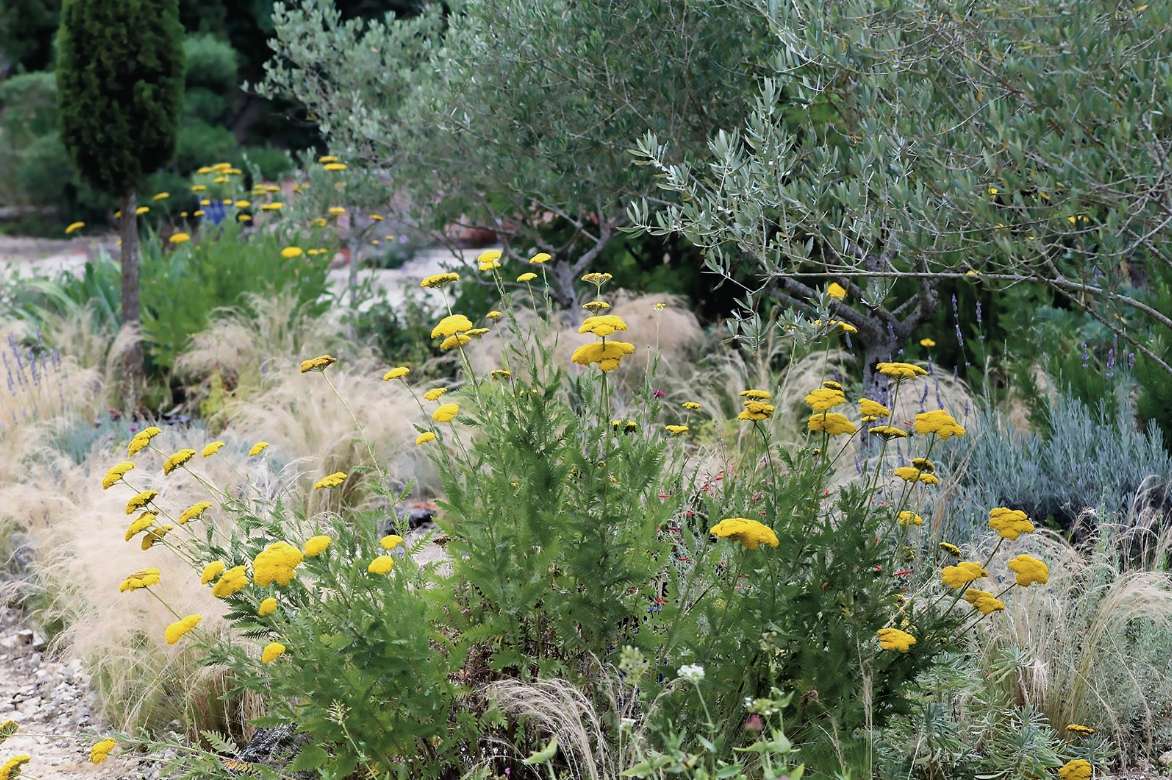

A Mediterranean-style planting scheme featuring: Stipa tenuifolia, Yarrow such as Achillea filipendulina ‘Golden Plate’, Lavender and Olea Europea (Le jardin d’Entëoulet – Gers © Renée Boy-Faget)
Its silky clumps with shimmering reflections and decorative foliage for much of the year bring a poetic quiver, softness, lightness and movement that lifts all flowering displays. Its often autumn-hued tones and parchment-like plumes have the advantage of softening fiery colour schemes.
To avoid monotony in mass plantings, combine it in subtle themes based on contrasting forms and tones.
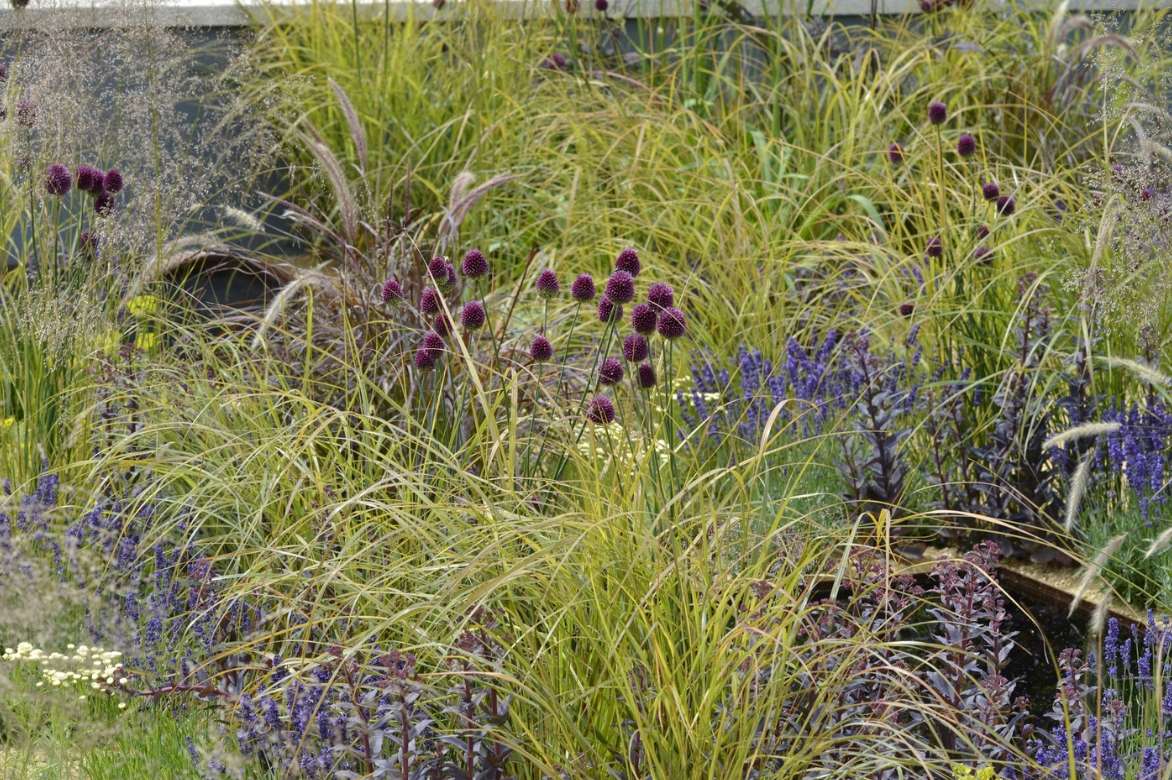

A natural, colourful planting combination: Allium sphaerocephalon, Stipa arundinacea, Lavender, purple Sedum like the superb variety ‘Purple Emperor’ and some Pennisetums (©Nathalie Pasquel – MAP)
Stipa thrives alongside equally undemanding plants that love sun and well-drained soil, such as Eryngium with their bristly flower heads, Artemisia, or the spiky stems of rosemary.
It punctuates mineral landscapes with its airy presence, accompanied by other grasses like Wavy Hair Grass, Pennisetum that sway with it in the breeze, or medium-sized Phormium.
In large borders, it combines easily with many summer or autumn-flowering perennials like Agastache and Allium sphaerocephalon. It complements floriferous, delicate perennials such as Gauras, Verbena bonariensis, toadflax, salvias, penstemons, Asters, scabious or Love-in-a-mist. It lightens the flowering of heavier perennials like Oriental Poppies or irises.
Stipa works perfectly alongside meadow flowers in naturalistic gardens. The golden spikes of Stipa gigantea create striking contrasts with the flat flower heads of yellow yarrow or large daisies.
Planted en masse, Stipa and Pennisetum form a perfect setting for the colourful summer blooms of Echinacea, Daylilies, Helenium or Red Hot Pokers, either creating contrast or harmonising overly bold colour schemes. In fiery mixed borders, they soften the somewhat rigid habit of these tall beauties.
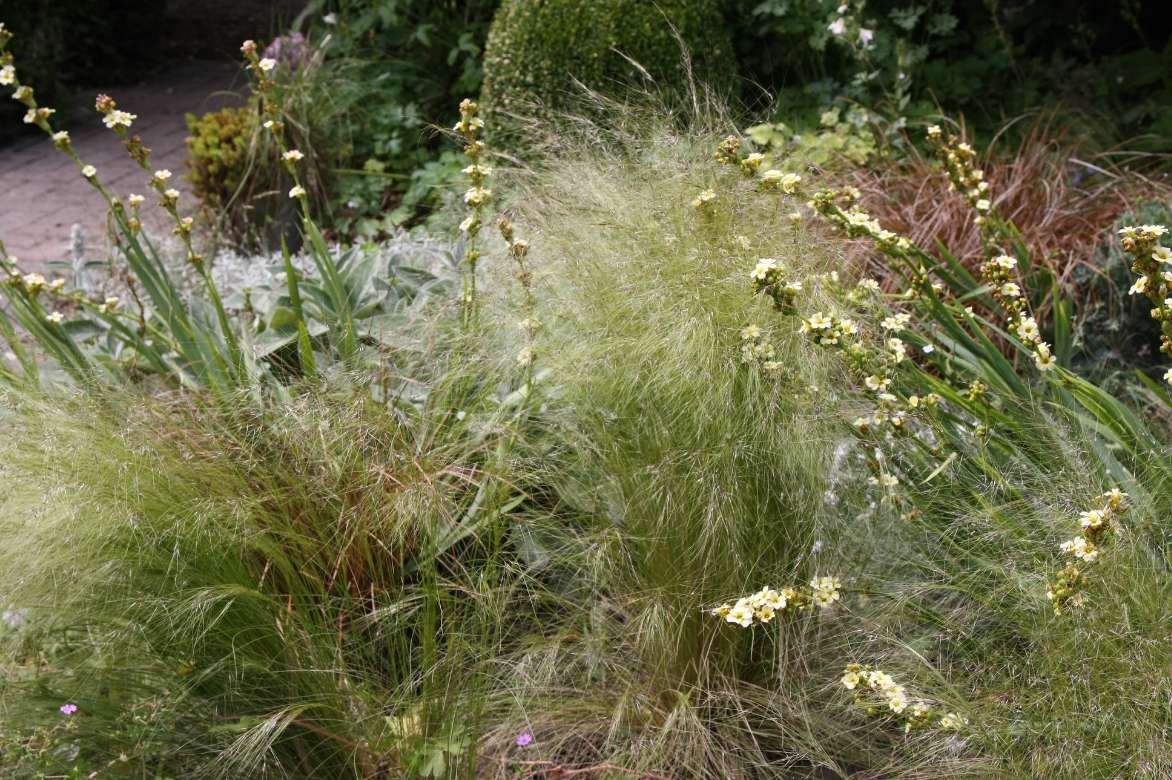

An airy planting combination: Stipa tenuifolia, Sisyrinchium striatum, Carex comans ‘Bronze Form’ (Le jardin de Sophie Mestdag – photo Virginie Douce).
At the front of borders, surround Stipa with plants like low-growing sedums, dwarf chrysanthemums or other stonecrops.
The silky clumps of Stipa are beautifully highlighted against dark foliage such as Smoke Bush, Taxus baccata or Physocarpus.
Useful resources
- Which varieties of ornamental grasses to choose, how to prune them, plant them, combine them – discover all our advice on our blog!
- Create a sunny naturalistic garden with the Stipa from our collection!
- Which plants to combine with our stipa in a dry garden?
- Stipa: which variety to choose for your garden?
- How to comb and maintain stipas: the complete guide
- Discover our ideas for combining Stipas
- Discover other cuddly plants in our advice sheet
- Discover 7 ornamental grasses for a south-facing garden
- Discover the indestructible ornamental grasses
- Subscribe!
- Contents
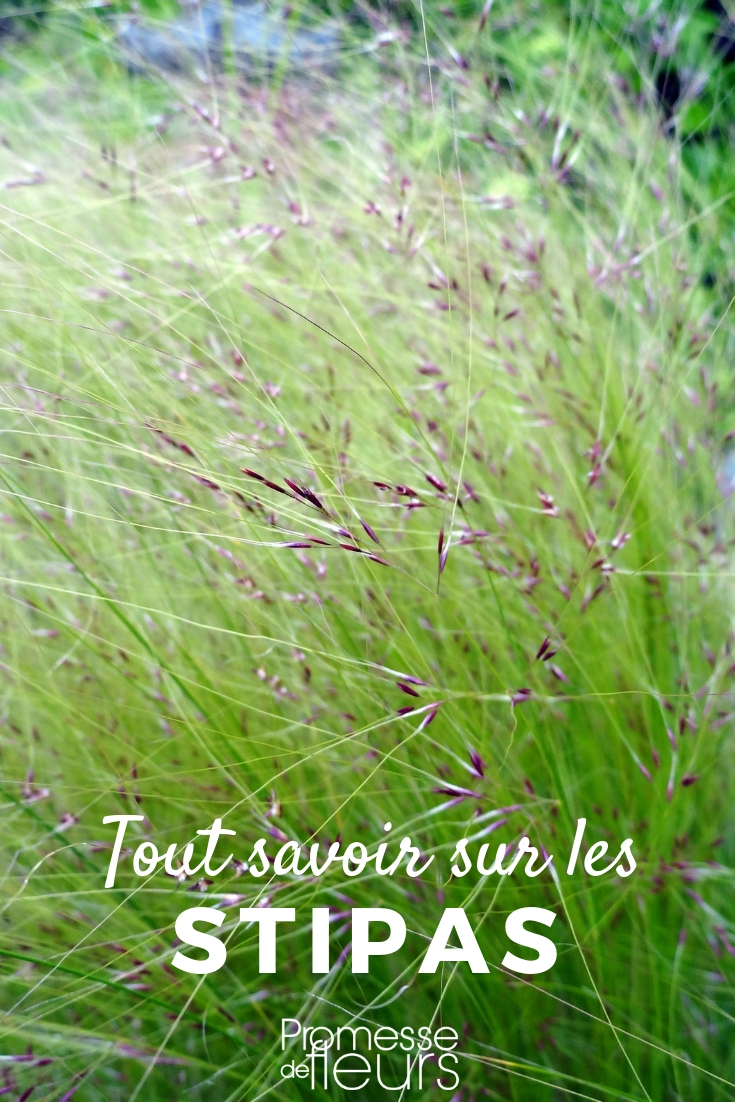


































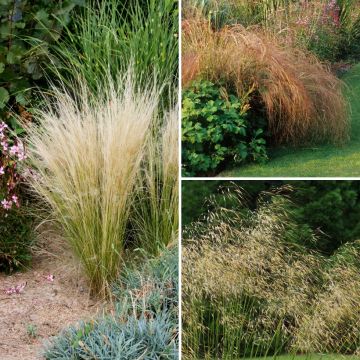




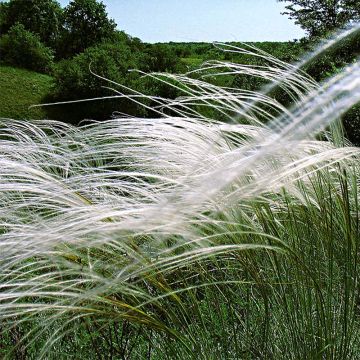
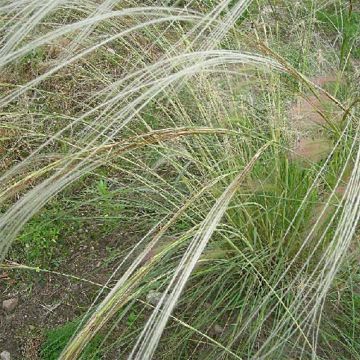

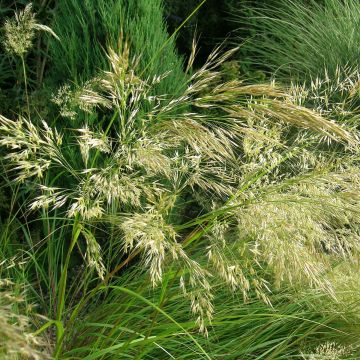

Comments